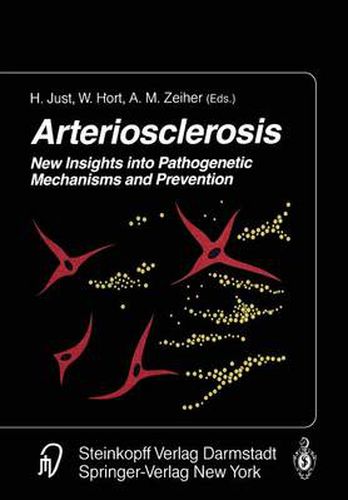Readings Newsletter
Become a Readings Member to make your shopping experience even easier.
Sign in or sign up for free!
You’re not far away from qualifying for FREE standard shipping within Australia
You’ve qualified for FREE standard shipping within Australia
The cart is loading…






This title is printed to order. This book may have been self-published. If so, we cannot guarantee the quality of the content. In the main most books will have gone through the editing process however some may not. We therefore suggest that you be aware of this before ordering this book. If in doubt check either the author or publisher’s details as we are unable to accept any returns unless they are faulty. Please contact us if you have any questions.
A vast literature has been concerned with arteriosclerosis and yet, many aspects of pathogenesis and of the mechanism of development of the arteriosclerotic vascular lesion remain only poorly understood. In recent years, our knowledge of the earliest stages of arteriosclerosis have greatly improved. By now, we have learned to relate morphologic changes to disturbances in function. It has been of particular impor tance that components of the arterial wall could be analyzed in regard to dysfunction, for example, in the endothelium or the vascular smooth muscle. The interaction of the different morphological components of the vascular wall could thus be much bet ter understood. Likewise, the interaction between the arterial wall and the flowing blood could be much better described, including the intimate relationship between platelets and the endothelium, the coagulation system and the endothelium, the granulocytes and the endothelial cell layer, as well as processes of migration of blood cells into the subendothelial space. The recognition of functional and morphological disturbance has attained clinical significance not only because the arteriosclerotic diseases have quantitatively reached the dimensions of an epidemic, that is, of a magnitude never been witnessed. It is also because of the development of new drugs that interfere with the atherogenic process and thereby prevent the development of the disease or halt its progression. It is also becoming increasingly possible to inhibit the occurrence of complications in existing arteriosclerotic lesions in manifest disease, i. e.
$9.00 standard shipping within Australia
FREE standard shipping within Australia for orders over $100.00
Express & International shipping calculated at checkout
This title is printed to order. This book may have been self-published. If so, we cannot guarantee the quality of the content. In the main most books will have gone through the editing process however some may not. We therefore suggest that you be aware of this before ordering this book. If in doubt check either the author or publisher’s details as we are unable to accept any returns unless they are faulty. Please contact us if you have any questions.
A vast literature has been concerned with arteriosclerosis and yet, many aspects of pathogenesis and of the mechanism of development of the arteriosclerotic vascular lesion remain only poorly understood. In recent years, our knowledge of the earliest stages of arteriosclerosis have greatly improved. By now, we have learned to relate morphologic changes to disturbances in function. It has been of particular impor tance that components of the arterial wall could be analyzed in regard to dysfunction, for example, in the endothelium or the vascular smooth muscle. The interaction of the different morphological components of the vascular wall could thus be much bet ter understood. Likewise, the interaction between the arterial wall and the flowing blood could be much better described, including the intimate relationship between platelets and the endothelium, the coagulation system and the endothelium, the granulocytes and the endothelial cell layer, as well as processes of migration of blood cells into the subendothelial space. The recognition of functional and morphological disturbance has attained clinical significance not only because the arteriosclerotic diseases have quantitatively reached the dimensions of an epidemic, that is, of a magnitude never been witnessed. It is also because of the development of new drugs that interfere with the atherogenic process and thereby prevent the development of the disease or halt its progression. It is also becoming increasingly possible to inhibit the occurrence of complications in existing arteriosclerotic lesions in manifest disease, i. e.